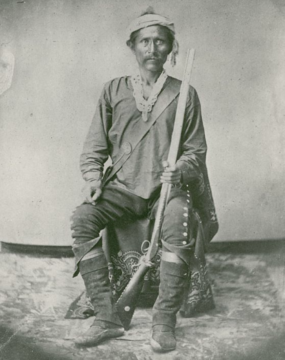by Mark Harvey
After we get back to our country, black clouds will rise and there will be plenty of rain. Corn will grow in abundance and everything [will] look happy. –Barboncito, Navajo Leader, 1868

My idea of a fun evening is listening to the oral arguments of a contentious dispute that has reached the Supreme Court. As much as I disagree with some of the justices, I must admit that almost all of them are wickedly sharp at analyzing the issues—the facts and the law—of every case that comes before them. I don’t always get how they arrive at their final votes on cases that seem cut and dried before their probing inquiry. But most of them can flay a poorly presented argument with all the efficiency of a seasoned hunter field-dressing a kill.
So it was with the recent hearing on Arizona v. The Navajo Nation, heard before the court this year on March 20. At stake, in this case, is what responsibility the US government does or doesn’t have in formally assessing the Navajo Nation’s need for water and then developing a plan to meet those needs. The brief on behalf of the Navajo people, Diné as they prefer to be called, puts the case in stark and unmistakable terms: “This case is about this promise of water to this tribe under these treaties, signed after these particular negotiations reflecting this tribe’s understanding. A promise is a promise.”
The promise referred to in the brief refers to a promise made about 150 years ago when the Diné signed a treaty in 1868 with the US Government to establish the Navajo Reservation as a “permanent home” where it sits today. The treaty is only seven pages long and it promises the Diné a permanent home in exchange for giving up their nomadic life, staying within the reservation boundaries, and allowing whites to build railways and forts throughout the reservation as they see fit. A lot of things were left out—like water rights. Read more »
